The Impact of GoLo Technology on the Quality Properties of Dealcoholised Wines
Abstract
1. Introduction
2. Materials and Methods
2.1. Sample Selection
2.2. Total Phenolic Content
2.3. Determination of Volatile Compounds by SBSE-GC-MS
2.4. Total Sugar Content
2.5. Turbidity
2.6. Titratable Acidity
2.7. Other Oenological Parameters
2.8. Sensorial Analysis
2.8.1. Chromatic Characteristic
2.8.2. Odour and Flavour
2.9. Statistical and Data Analysis
3. Results and Discussion
3.1. Oenological Parameters
3.2. Sensorial Analysis
3.3. Volatile Compound Analysis
4. Conclusions
Supplementary Materials
Author Contributions
Funding
Institutional Review Board Statement
Informed Consent Statement
Data Availability Statement
Conflicts of Interest
References
- OIV. State of the World Vine and Wine Sector in 2023. 2023. Available online: https://www.oiv.int/sites/default/files/2024-04/OIV_STATE_OF_THE_WORLD_VINE_AND_WINE_SECTOR_IN_2023.pdf (accessed on 21 January 2025).
- Blotevogel, S.; Schreck, E.; Laplanche, C.; Besson, P.; Saurin, N.; Audry, S.; Viers, J.; Oliva, P. Soil chemistry and meteorological conditions influence the elemental profiles of West European wines. Food Chem. 2019, 298, 125033. [Google Scholar] [CrossRef]
- Sánchez-Ortiz, A.; Mateo-Sanz, J.M.; Mateos-Fernández, M.A.; Figueras, M.L. New Labeling Rules for Wine: Wine Alcohol-Derived Calories and Polyphenol Consumption on Health. Foods 2024, 13, 295. [Google Scholar] [CrossRef]
- Pienaar, S.W. Process and Apparatus for the Reduction of Alcohol in Fermented Beverages. Google Patents US20150132459A1, 2 February 2016. [Google Scholar]
- Veiga-del-Baño, J.M.; Cuenca-Martínez, J.J.; Oliva, J.; Cámara, M.Á.; Andreo-Martínez, P. Total Dealcoholisation of Wines by Very Low Temperature Vacuum Distillation Technology Called GoLo. Beverages 2024, 10, 32. [Google Scholar] [CrossRef]
- Puyt, R.W.; Lie, F.B.; Wilderom, C.P.M. The origins of SWOT analysis. Long Range Plann. 2023, 56, 102304. [Google Scholar] [CrossRef]
- OIV. Resolution OIV-OENO 394A-2012. 2012. Available online: https://www.oiv.int/public/medias/1431/oiv-oeno-394a-2012-en.pdf (accessed on 23 January 2025).
- EU. Regulation (EU) No 1308/2013 of the European Parliament and of the Council of 17 December 2013 Establishing a Common Organisation of the Markets in Agricultural Products and Repealing Council Regulations (EEC) No 922/72, (EEC) No 234/79, (EC) No 1037/2001 and (EC) No 1234/2007. 2013. Available online: https://eur-lex.europa.eu/legal-content/EN/ALL/?uri=celex%3A32013R1308 (accessed on 21 March 2025).
- Pickering, G.J. Low- and Reduced-alcohol Wine: A Review. J. Wine Res. 2000, 11, 129–144. [Google Scholar] [CrossRef]
- Kucherenko, V.; Uspalenko, O. Relevance of the production of non-alcoholic wines. BIO Web Conf. 2023, 68, 03017. [Google Scholar]
- Gómez-Plaza, E.; López-Nicolás, J.M.; López-Roca, J.M.; Martínez-Cutillas, A. Dealcoholization of Wine. Behaviour of the Aroma Components during the Process. LWT-Food Sci. Technol. 1999, 32, 384–386. [Google Scholar] [CrossRef]
- Sam, F.E.; Ma, T.-Z.; Salifu, R.; Wang, J.; Jiang, Y.-M.; Zhang, B.; Han, S.-Y. Techniques for Dealcoholization of Wines: Their Impact on Wine Phenolic Composition, Volatile Composition, and Sensory Characteristics. Foods 2021, 10, 2498. [Google Scholar] [CrossRef]
- Sam, F.E.; Ma, T.; Liang, Y.; Qiang, W.; Atuna, R.A.; Amagloh, F.K.; Morata, A.; Han, S. Comparison between Membrane and Thermal Dealcoholization Methods: Their Impact on the Chemical Parameters, Volatile Composition, and Sensory Characteristics of Wines. Membranes 2021, 11, 957. [Google Scholar] [CrossRef]
- Catarino, M.; Mendes, A. Dealcoholizing wine by membrane separation processes. Innov. Food Sci. Emerg. Technol. 2011, 12, 330–337. [Google Scholar] [CrossRef]
- Margallo, M.; Aldaco, R.; Barceló, A.; Diban, N.; Ortiz, I.; Irabien, A. Life cycle assessment of technologies for partial dealcoholisation of wines. Sustain. Prod. Consum. 2015, 2, 29–39. [Google Scholar] [CrossRef]
- Montevecchi, G.; Ricci, A.; Masino, F.; Ferrari, V.; Versari, A.; Antonelli, A. Profile of red wine partially dealcoholized with a membrane-based technique and strategies to mitigate the loss of volatile compounds. Curr. Res. Food Sci. 2024, 8, 100776. [Google Scholar] [CrossRef]
- Zamora, F. Dealcoholised Wines and Low-Alcohol Wines. In Wine Safety, Consumer Preference, and Human Health; Moreno-Arribas, M.V., Bartolomé Suáldea, B., Eds.; Springer International Publishing: Cham, Switzerland, 2016; pp. 163–182. [Google Scholar]
- Saussay, A.; Sato, M. The impact of energy prices on industrial investment location: Evidence from global firm level data. J. Environ. Econ. Manag. 2024, 127, 102992. [Google Scholar] [CrossRef]
- Belisario-Sánchez, Y.; Taboada-Rodríguez, A.; Marín, F.; Iguaz, A.; López-Gómez, A. Aroma Recovery in Wine Dealcoholization by SCC Distillation. Food Bioprocess Technol. 2011, 5, 2529–2539. [Google Scholar] [CrossRef]
- Mangindaan, D.; Khoiruddin, K.; Wenten, I.G. Beverage dealcoholization processes: Past, present, and future. Trends Food Sci. Technol. 2018, 71, 36–45. [Google Scholar] [CrossRef]
- Kumar, Y.; Ricci, A.; Parpinello, G.P.; Versari, A. Dealcoholized Wine: A Scoping Review of Volatile and Non-Volatile Profiles, Consumer Perception, and Health Benefits. Food Bioprocess Technol. 2024, 17, 3525–3545. [Google Scholar] [CrossRef]
- Nemzer, B.; Kalita, D.; Yashin, A.Y.; Yashin, Y.I. Chemical Composition and Polyphenolic Compounds of Red Wines: Their Antioxidant Activities and Effects on Human Health—A Review. Beverages 2022, 8, 1. [Google Scholar] [CrossRef]
- Gutiérrez-Escobar, R.; Aliaño-González, M.J.; Cantos-Villar, E. Wine Polyphenol Content and Its Influence on Wine Quality and Properties: A Review. Molecules 2021, 26, 718. [Google Scholar] [CrossRef]
- Haslam, E. Natural polyphenols (Vegetable tannins) as drugs: Possible modes of action. J. Nat. Prod. 1996, 59, 205–215. [Google Scholar] [CrossRef]
- Liu, S.; Lou, Y.; Li, Y.; Zhao, Y.; Laaksonen, O.; Li, P.; Zhang, J.; Battino, M.; Yang, B.; Gu, Q. Aroma characteristics of volatile compounds brought by variations in microbes in winemaking. Food Chem. 2023, 420, 136075. [Google Scholar] [CrossRef]
- González Pereira, A.; Corral, M.; García Oliveira, P.; Rodríguez, M.; Jiménez-López, C.; Lourenço-Lopes, C.; Barros, L.; Ferreira, I.; Prieto, M.; Simal-Gandara, J. Management of Wine Aroma Compounds: Principal Basis and Future Perspectives. In Winemaking-Stabilization, Aging Chemistry and Biochemistry; IntechOpen: London, UK, 2020. [Google Scholar]
- Ballester, J.; Belascoin, M.; Gonzalez-Hernandez, M.; Parga-Dans, E.; Alonso González, P.; Saenz-Navajas, M.-P. Sensory attributes and quality perception of red natural wines: A comparative study in Spain and France. OENO One 2024, 58, 1–10. [Google Scholar] [CrossRef]
- ISO. ISO/IEC-17025; General Requirements for the Competence of Testing and Calibration Laboratories. 2017. Available online: https://www.iso.org/obp/ui#iso:std:iso-iec:17025:ed-3:v2:es (accessed on 11 February 2025).
- OIV. Compendium of International Methods of Analysis of Wine and Must. 2023. Available online: https://www.oiv.int/standards/compendium-of-international-methods-of-wine-and-must-analysis (accessed on 22 January 2024).
- Sánchez-Gómez, R.; Zalacain, A.; Alonso, G.L.; Salinas, M.R. Effect of toasting on non-volatile and volatile vine-shoots low molecular weight phenolic compounds. Food Chem. 2016, 204, 499–505. [Google Scholar] [CrossRef] [PubMed]
- Lesschaeve, I.; Noble, A.C. 7-Sensory analysis of wine. In Managing Wine Quality, 2nd ed.; Reynolds, A.G., Ed.; Woodhead Publishing: Sawston, UK, 2022; pp. 243–277. [Google Scholar]
- OIV. Review Document on Sensory Analysis of Wine. 2015. Available online: https://www.oiv.int/public/medias/3307/review-on-sensory-analysis-of-wine.pdf (accessed on 30 January 2024).
- OIV. Compendium of International Methods Of Analysis–OIV. Chromatic Characteristics. Method OIV-MA-AS2-07B. Type IV Method. 2009. Available online: https://www.oiv.int/public/medias/2475/oiv-ma-as2-07b.pdf (accessed on 30 January 2024).
- DIN. DIN 10964:2014-11; Sensory Analysis-Simple Descriptive Test. 2014. Available online: https://tienda.aenor.com/norma-din-10964-2014-11-222693508 (accessed on 30 January 2024).
- Pimentel, T.C.; Gomes da Cruz, A.; Deliza, R. Sensory Evaluation: Sensory Rating and Scoring Methods. In Encyclopedia of Food and Health; Caballero, B., Finglas, P.M., Toldrá, F., Eds.; Academic Press: Cambridge, MA, USA, 2016; pp. 744–749. [Google Scholar]
- ISO. ISO 8586:2023; Sensory Analysis—Selection and Training of Sensory Assessors. 2023. Available online: https://www.iso.org/es/contents/data/standard/07/66/76667.html (accessed on 30 January 2024).
- Aria, M.; Cuccurullo, C. Bibliometrix: An R-tool for comprehensive science mapping analysis. Informetrics 2017, 11, 959–975. [Google Scholar] [CrossRef]
- Pickering, G.J.; Heatherbell, D.A.; Vanhanen, L.P.; Barnes, M.F. The Effect of Ethanol Concentration on the Temporal Perception of Viscosity and Density in White Wine. Am. J. Enol. Vitic. 1998, 49, 306–318. [Google Scholar] [CrossRef]
- Gambuti, A.; Rinaldi, A.; Lisanti, M.T.; Pessina, R.; Moio, L. Partial dealcoholisation of red wines by membrane contactor technique: Influence on colour, phenolic compounds and saliva precipitation index. Eur. Food Res. Technol. 2011, 233, 647–655. [Google Scholar] [CrossRef]
- De La Cruz Rojas, E.M.; Nuñez-Pérez, J.; Lara-Fiallos, M.; Pais-Chanfrau, J.-M.; Espín-Valladares, R.; DelaVega-Quintero, J.C. An Artificial Intelligence Approach for Estimating the Turbidity of Artisanal Wine and Dosage of Clarifying Agents. Appl. Sci. 2024, 14, 4416. [Google Scholar] [CrossRef]
- Anonymous. Sensory Analysis. J. Am. Soc. Brew. Chem. 1987, 45, 102–105. [Google Scholar] [CrossRef]
- Pham, D.-T.; Ristic, R.; Stockdale, V.J.; Jeffery, D.W.; Tuke, J.; Wilkinson, K. Influence of partial dealcoholization on the composition and sensory properties of Cabernet Sauvignon wines. Food Chem. 2020, 325, 126869. [Google Scholar] [CrossRef]
- Fisher, C.; Scott, T.R. Flavores de los Alimentos Biología y Química; Acribia: Zaragoza, Spain, 2000. [Google Scholar]
- Arias-Pérez, I.; Sáenz-Navajas, M.P.; de-la-Fuente-Blanco, A.; Ferreira, V.; Escudero, A. Insights on the role of acetaldehyde and other aldehydes in the odour and tactile nasal perception of red wine. Food Chem. 2021, 361, 130081. [Google Scholar] [CrossRef]
- Dziadas, M.; Jeleń, H.H. Analysis of terpenes in white wines using SPE–SPME–GC/MS approach. Anal. Chim. Acta 2010, 677, 43–49. [Google Scholar] [CrossRef]
- Figueroa Paredes, D.A.; Assof, M.; Sánchez, R.J.; Sari, S.; Catania, A.; Fanzone, M.; Espinosa, J. Partial dealcoholization of a Malbec wine through pervaporation with a PDMS membrane: Effect of operation temperature on process economics, volatile aroma composition and sensory properties. Sep. Purif. Technol. 2024, 335, 126076. [Google Scholar] [CrossRef]
- Martínez-Moreno, A.; Bautista-Ortin, A.B.; Gómez-Plaza, E. Correlation of chemical composition and sensory scores in Spanish Monastrell red wines: Insights from a blind wine competition. J. Food Compost. Anal. 2024, 134, 106567. [Google Scholar] [CrossRef]
- Ling, M.; Qi, M.; Li, S.; Shi, Y.; Pan, Q.; Cheng, C.; Yang, W.; Duan, C. The influence of polyphenol supplementation on ester formation during red wine alcoholic fermentation. Food Chem. 2022, 377, 131961. [Google Scholar] [CrossRef] [PubMed]
- Ling, M.; Cui, D.; Zhu, B.; Li, D.; Mu, H.; Li, J.; Shi, Y.; Duan, C.; Lan, Y. The influence of polyphenols on the hydrolysis and formation of volatile esters in wines during aging: An insight of kinetic equilibrium reaction. Food Chem. 2025, 464, 141593. [Google Scholar] [CrossRef]
- Rødtjer, A.; Skibsted, L.H.; Andersen, M.L. The role of phenolic compounds during formation of turbidity in an aromatic bitter. Food Chem. 2010, 123, 1035–1039. [Google Scholar] [CrossRef]
- Różański, M.; Pielech-Przybylska, K.; Balcerek, M. Influence of Alcohol Content and Storage Conditions on the Physicochemical Stability of Spirit Drinks. Foods 2020, 9, 1264. [Google Scholar] [CrossRef]
- Ingdal, M.; Johnsen, R.; Harrington, D.A. The Akaike information criterion in weighted regression of immittance data. Electrochim. Acta 2019, 317, 648–653. [Google Scholar] [CrossRef]
- Marais, J. Terpenes in the aroma of grapes and wines: A review. S. Afr. J. Enol. Vitic. 1983, 4, 49–58. [Google Scholar] [CrossRef]
- Sam, F.E.; Ma, T.; Wang, J.; Liang, Y.; Sheng, W.; Li, J.; Jiang, Y.; Zhang, B. Aroma improvement of dealcoholized Merlot red wine using edible flowers. Food Chem. 2023, 404, 134711. [Google Scholar] [CrossRef]
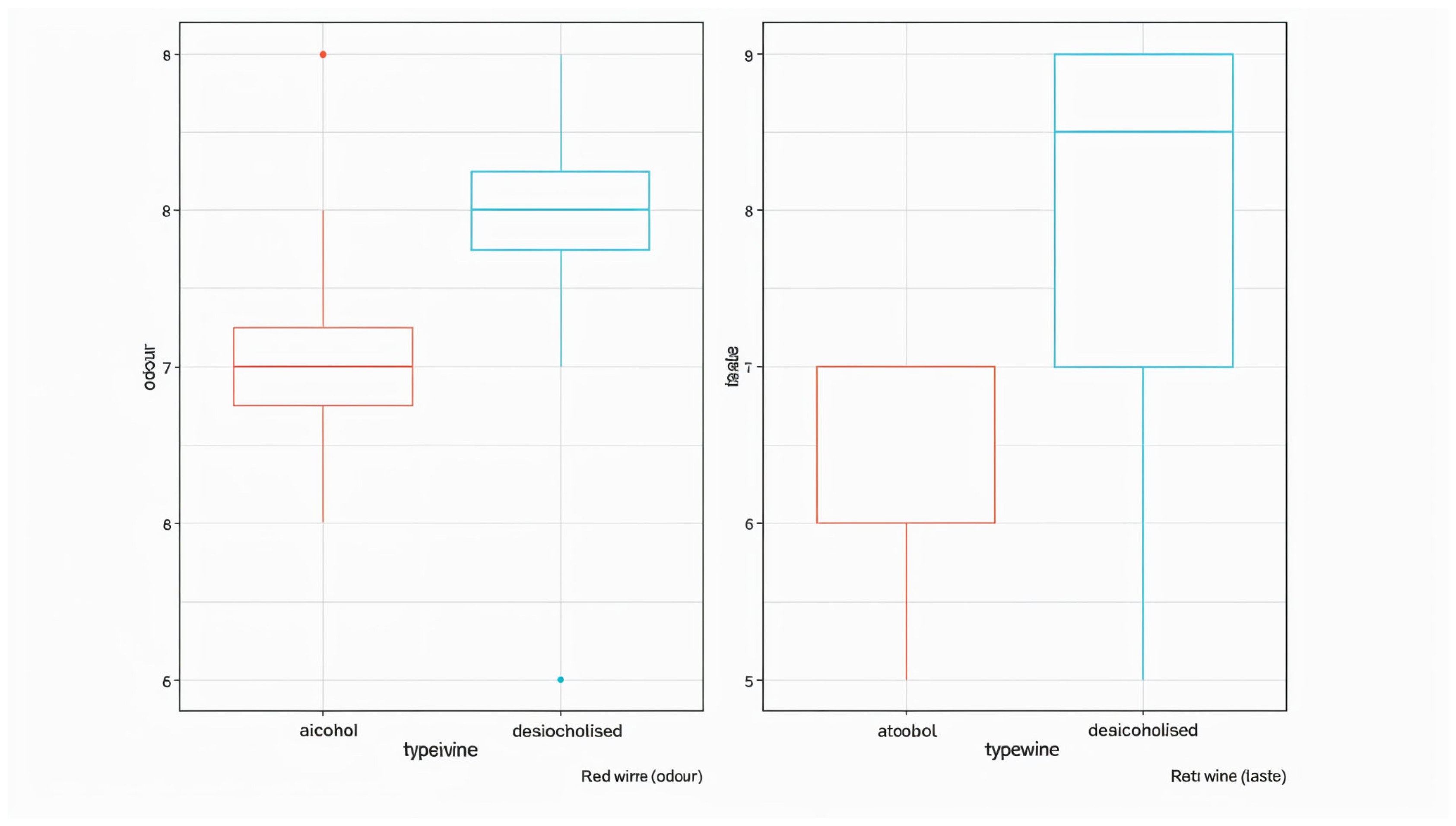
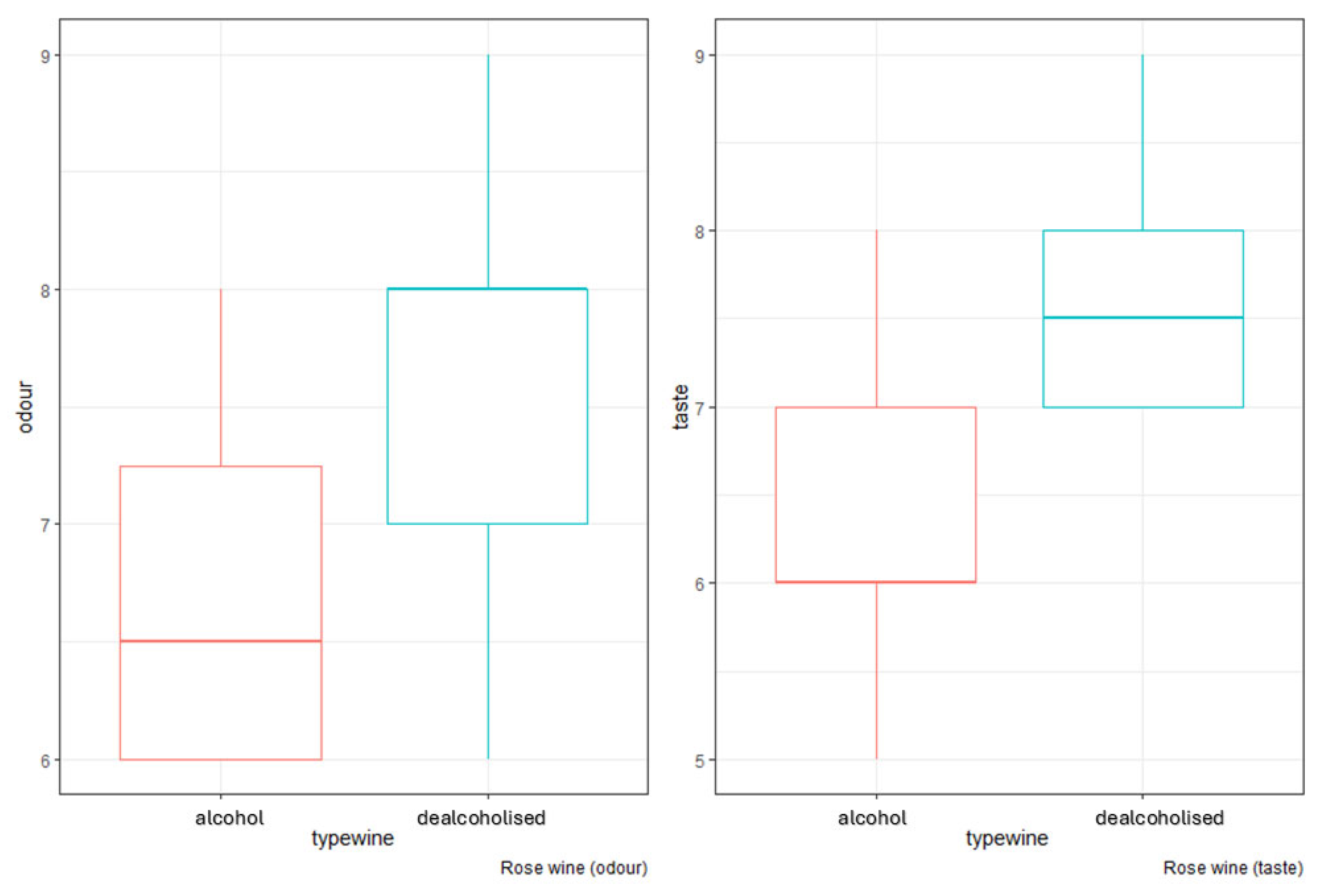
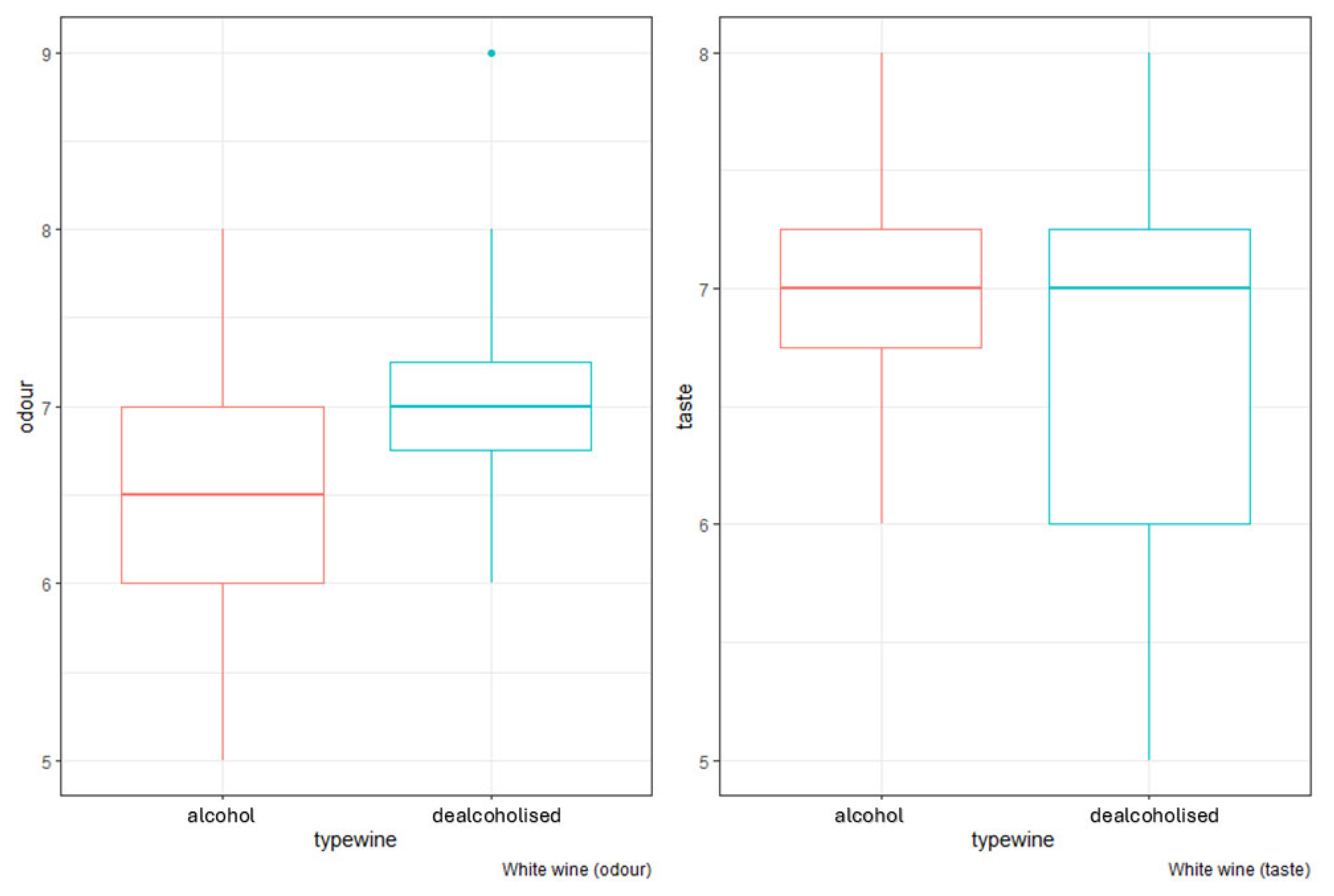

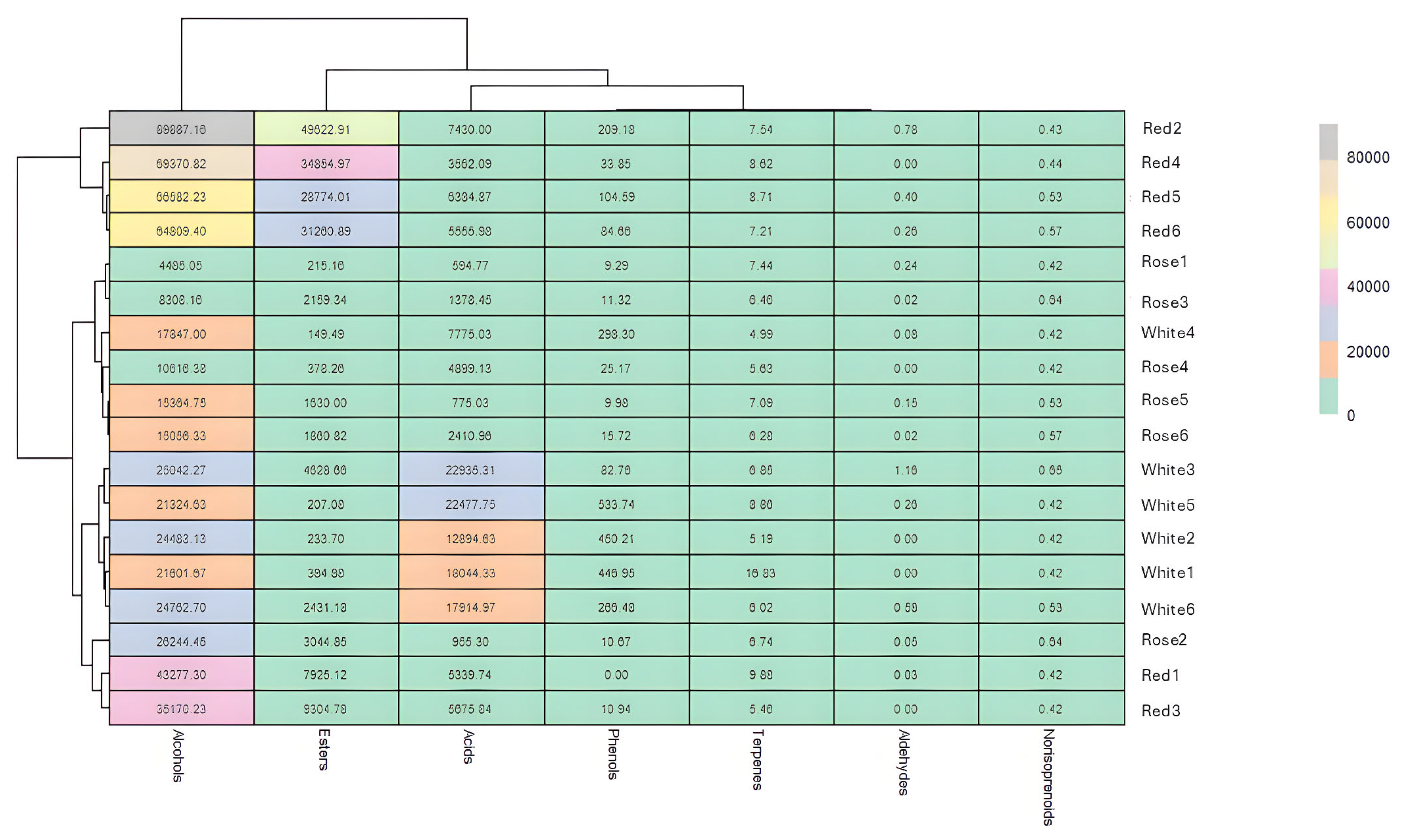
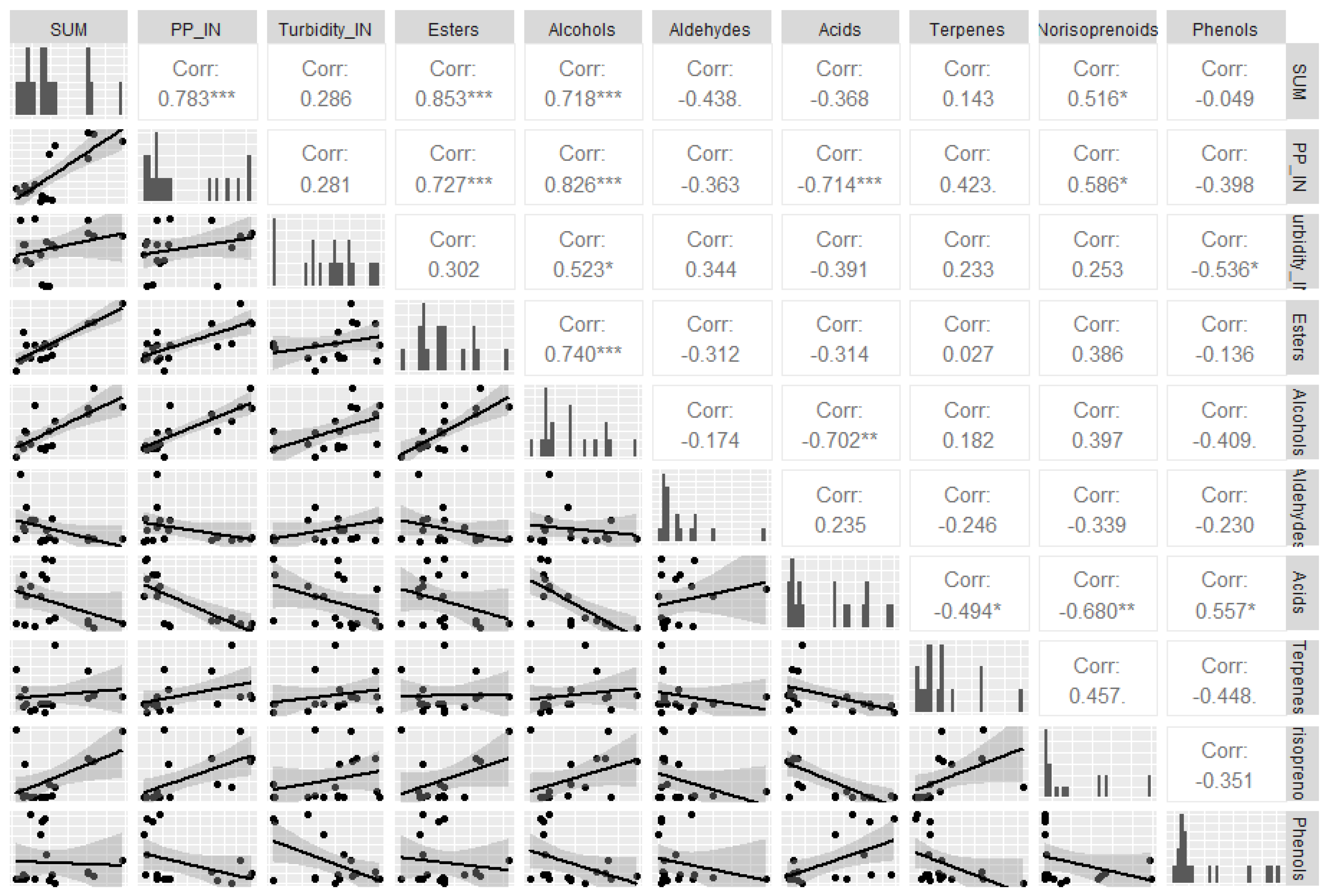
| SWOT | GoLo | No GoLo |
|---|---|---|
| Strengths | Elimination of alcohol content according to OIV-OENO 394A-2012 resolution [7,8] and below total dealcoholisation (0.5% v/v) and elimination of free and total sulphites [5] | First patented technologies in early 1900 [9] Widely used in industrial and scientific fields [10,11,12] |
| Weaknesses | Recent technology, patented in 2016 [4] and marketed since 2022 No articles or studies other than those provided by the manufacturer | Some techniques fail to reduce the alcohol content according to OIV-OENO 394A-2012 [7,8] or below total dealcoholisation (0.5% v/v) [12,13,14,15] Increase in free and total sulphite content [16] Some techniques show high maintenance and operational costs [12,17] |
| Opportunities | The behaviour and evolution of organoleptic characteristics and aromas in various types of wines | Optimisation of the best existing techniques to meet the minimum alcohol content with the least loss of aromas and organoleptic characteristics |
| Threats | Rising of energy prices [18] Loss of aromas and organoleptic defects | Rising of energy prices [18] Loss of aromas and organoleptic defects [11,12,16,19,20,21] |
| Wine | Total Polyphenols (++) | Sugars (g/L) | Turbidity (NTU) (++) | Alcohol (% v/v) (++) | pH (uds pH) | T SO2 (mg/L) (++) | F SO2 (++) | Titratable Acidity (g/L) | Volatile Acidity (g/L) |
|---|---|---|---|---|---|---|---|---|---|
| Rbef | 763 ± 185 | 0.41 ± 0.13 | 1.35 ± 0.25 | 10.8 ± 0.81 | 3.27 ± 0.26 | 69 ± 12 | 15.5 ± 3 | 5.14 ± 0.34 | <0.15 |
| Raft | 836 ± 201 | 0.48 ± 0.12 | 1.53 ± 0.24 | 0 | 3.24 ± 0.31 | 55.0 ± 13 | 2 ± 0.5 | 5.47 ± 0.52 | <0.15 |
| Tbef | 2153 ± 455 | 0.30 ± 0.14 | 1.60 ± 0.45 | 12.4 ± 1.04 | 3.59 ± 0.23 | 104 ± 24 | 30 ± 4.5 | 4.89 ± 0.34 | 0.44 ± 0.14 |
| Taft | 2415 ± 325 | 0.36 ± 0.11 | 2.82 ± 0.54 | 0 | 3.43 ± 0.21 | 78 ± 18 | 2 ± 0.3 | 5.43 ± 0.29 | 0.47 ± 0.12 |
| Wbef | 525 ± 135 | 0.22 ± 0.11 | 0.87 ± 0.21 | 9.5 ± 0.44 | 3.48 ± 0.14 | 113 ± 28 | 24 ± 8.5 | 5.17 ± 0.51 | 0.42 ± 0.13 |
| Waft | 567 ± 166 | 0.27 ± 0.10 | 1.48 ± 0.18 | 0 | 3.35 ± 0.24 | 69 ± 14 | 1.5 ± 0.3 | 5.33 ± 0.62 | 0.44 ± 0.11 |
| Wine | I | N | ΔC |
|---|---|---|---|
| Rbef | 0.475 | 1.368 | 0.202 |
| Raft | 0.575 | 1.474 | |
| Tbef | 6.725 | 1.666 | 2.271 |
| Taft | 8.353 | 2.270 | |
| Wbef | 0.092 | 5.233 | −1.86 |
| Waft | 0.164 | 3.303 |
| Type of Group | Compounds Analysed | Type of Aroma | Characteristics |
|---|---|---|---|
| Esters | Ethyl acetate, ethyl butyrate, ethyl hexanoate, isoamyl acetate, ethyl hexanoate, hexyl acetate, ethyl octanoate, ethyl decanoate, diethyl succinate, 2-phenylethyl acetate, ethyl cinnamate | Primary | Fruity, floral |
| Alcohols | 3-Methyl-1-butanol, 1-hexanol, 3-hexen-1-ol, (Z), 1-octen-3-ol, benzyl alcohol, phenyethyl alcohol | Secondary | Fermentation product |
| Acids | Hexanoic acid, octanoic acid, decanoic acid | Primary | Rancid |
| Phenols | Guaiacol, 4-ethyl-phenol, 4-vinylguaiacol | Secondary | Spicy, smoked |
| Terpenes | cis-Linalol oxide, linalool, α-terpineol, citronellol, nerolidol isomer d-limoneno, farnesol isomer | Secondary | Floral, sweet |
| Aldehydes | Nonanal, benzaldehyde | Secondary | Sweet |
| Norisoprenoids | α-Ionone, β-ionone | Tertiary | Floral, fruity |
| Aroma Groups | %R Range | %R Average | %T Range | %T Average | %W Range | %W Average |
|---|---|---|---|---|---|---|
| Esters | 90.2 to 99.3 | 94.9 | 46.1 to 81.2 | 63.2 | 83.8 to 99.5 | 96.1 |
| Alcohols | 32 to 54.3 | 45.2 | (−98.1) to (−17.8) | (−41.46) | (−62.6) to 2.2 | (−39.2) |
| Aldehydes | 81.6 to 100 | 95.2 | 48.9 to 100 | 86.3 | 67.5 to 100 | 91.0 |
| Acids | 75.7 to 91.2 | 83.5 | (−34.7) to 25.2 | 3.6 | 3.7 to 53.4 | 16.2 |
| Terpenes | 52.1 to 89.3 | 72.4 | 74.3 to 90.6 | 79.2 | 4.3 to 76.8 | 45.0 |
| Norisoprenoids | (−47.2) to 39.8 | (−11.01) | 11.2 to 38.5 | 21.7 | (−45.9) to 3.3 | (−6.9) |
| Phenols | 38.9 to 52.2 | 47.3 | (−76.3) to 9.8 | (−16.6) | (−94) to 16.2 | (−50.7) |
Disclaimer/Publisher’s Note: The statements, opinions and data contained in all publications are solely those of the individual author(s) and contributor(s) and not of MDPI and/or the editor(s). MDPI and/or the editor(s) disclaim responsibility for any injury to people or property resulting from any ideas, methods, instructions or products referred to in the content. |
© 2025 by the authors. Licensee MDPI, Basel, Switzerland. This article is an open access article distributed under the terms and conditions of the Creative Commons Attribution (CC BY) license (https://creativecommons.org/licenses/by/4.0/).
Share and Cite
Cuenca-Martínez, J.J.; Veiga-del-Baño, J.M.; Cebrián-Tarancón, C.; Sánchez-Gómez, R.; Oliva, J.; Andreo-Martínez, P. The Impact of GoLo Technology on the Quality Properties of Dealcoholised Wines. Appl. Sci. 2025, 15, 3867. https://doi.org/10.3390/app15073867
Cuenca-Martínez JJ, Veiga-del-Baño JM, Cebrián-Tarancón C, Sánchez-Gómez R, Oliva J, Andreo-Martínez P. The Impact of GoLo Technology on the Quality Properties of Dealcoholised Wines. Applied Sciences. 2025; 15(7):3867. https://doi.org/10.3390/app15073867
Chicago/Turabian StyleCuenca-Martínez, Juan José, José Manuel Veiga-del-Baño, Cristina Cebrián-Tarancón, Rosario Sánchez-Gómez, José Oliva, and Pedro Andreo-Martínez. 2025. "The Impact of GoLo Technology on the Quality Properties of Dealcoholised Wines" Applied Sciences 15, no. 7: 3867. https://doi.org/10.3390/app15073867
APA StyleCuenca-Martínez, J. J., Veiga-del-Baño, J. M., Cebrián-Tarancón, C., Sánchez-Gómez, R., Oliva, J., & Andreo-Martínez, P. (2025). The Impact of GoLo Technology on the Quality Properties of Dealcoholised Wines. Applied Sciences, 15(7), 3867. https://doi.org/10.3390/app15073867






